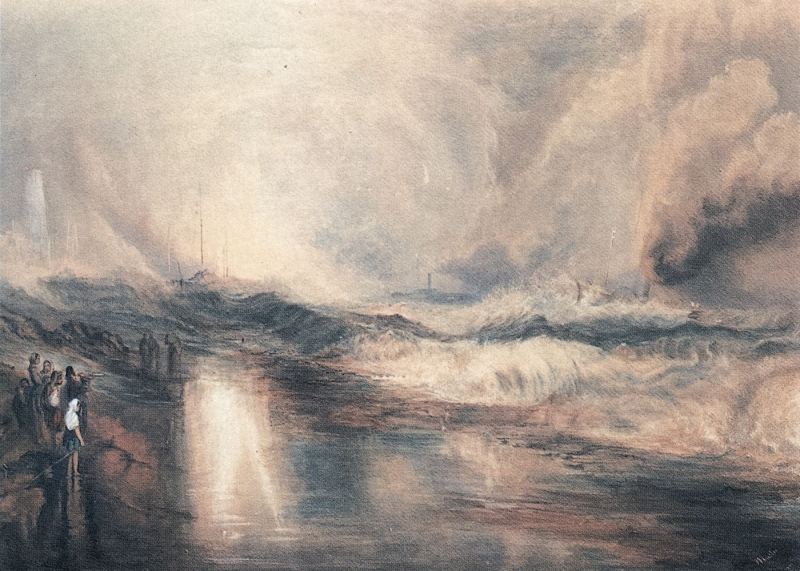Whistler's Copy after Turner's 'Rockets and blue lights (close at hand) to warn steam-boats of shoal water' dates from late 1854 or early 1855.

Copy after Turner's 'Rockets and blue lights (close at hand) to warn steam-boats of shoal water', private collection
For more information on this work, see MacDonald 1995 (cat. rais.) [more] (cat. no. 3).
It was originally assumed to be an oil painting, and so is also catalogued in YMSM 1980 [more] (cat. no. 5) as 'copy after Turner'.
Last updated: 26th February 2021 by Margaret





